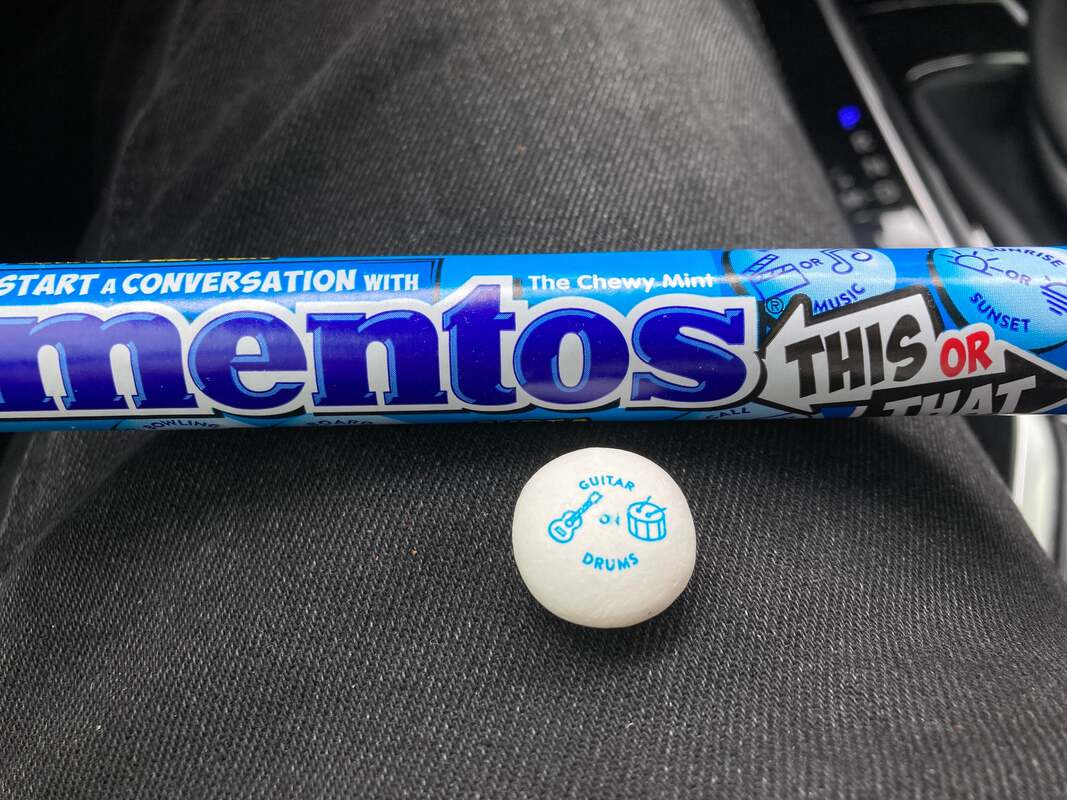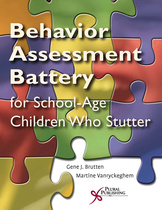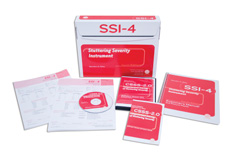|
As a speech therapist, I'm always looking for fun and engaging activities to practice augmentative and alternative communication (AAC) with my students. One of my kids is really good at requesting on his device. I've been trying to expand that to commenting, asking questions, and expressing opinions. Well, I happened to know that my student likes mints (actually all candy), so I keep a few hidden stashes of candy around my office (just in case). Well, sure enough, my student independently requested "candy" with his communication device. So I modeled back, "Can I have candy?" and told him that if he wants something from someone else, that he could always ask them. I didn't make him create the phrase on his device. I just modeled it and gave him the candy. It's a good reminder that AAC doesn't have to be a demanding activity. It wasn't intended to be a reward rather it was a shared moment. We both popped in a Mentos. Actually, it was rather matter of fact. Remember, it should be relaxed and engaging and fun.
So, I opened up a new pack of Mentos that I had grabbed the day before at the drug store. I opened it up and as I was handing it to him, I noticed that there was writing on the Mentos. It had two little icons and the words HOTEL or CAMP. Then I looked at the package and realized that I had purchased a special kind of Mentos called THIS or THAT. Hmm. That quickly became a teachable moment. While I don't like to give out a lot of candy to my students, I thought that this could be a fun add-in to our session. Whenever he asked me (never prompted), we followed it up with a THIS or THAT question/topic. It was a great way to express preferences, likes and dislikes, and opinions. A skillful speech therapist would piggyback on those two words and talk more about their choice. Expand their expression. Ask questions. Describe. Talk about other types of candy. I even started a log of the choices so that I can prepare some fill-in-the-blank writing activities prior to our speech therapy sessions. The THIS or THAT Mentos are printed with two choices. These were the ones that we uncovered (and ate) so far:
0 Comments
Let me start off by saying that poop and fart jokes never get old no matter what age you are. My 3 year old students and my 26 year old students find bodily functions equally amusing (and me too). Reading and talking about these bodily functions is very engaging. When you add in realistic sound effects, you really see who has a scents of humor. Make sure you use a one-button switch so that someone can make the appropriate bodily function sounds. Okay, so here's what we practice: Letting others know when something is wrong. We use Pragmatic Organisation Dynamic Display (PODD) books along with low tech and high tech communication systems to practice saying, "Something's wrong. I feel sick. It's my stomach." We take turns pushing the button (farting/puking/grumbling stomach) and then saying the words that correspond. Using manners. This one is pretty self explanatory. Oops! Excuse me. Uh oh. Sorry about that. Commenting, Describing, and Using Interjections. This one can be fun for students to explore social comments and adjectives. Wow! Good one! That's disgusting! OMG! That's stinky. Yuk! Gross! Dude! Come on! Go away! Get out of here! Identifying body parts. What stinks? My butt. Where does puke come from? My stomach. My mouth. What is sweaty? My armpits. What body part should we talk about next? This activity has been memorable for several of my students. One of my older students often navigates to gross when I walk in the room. I'm not sure what that says about me, but I know he gets it. By the way, there are plenty of moments to generalize these skills in all environments. I'm sure you can imagine.
To start, we begin by brainstorming other terms for "up chuck" like barf, puke, vomit, spew, blow chunks, ralph, and hurl. This usually gets people interested. Before playing the game we might talk about times that we were sick. We talk about how we felt (tired, yucky, sick), what made us sick (food, my brother, car), and what made us feel better (sleep, Sprite/7Up, mom). We talk about where and when we got sick too (in the car, in a bucket, in bed, at school, in the toilet). It's fun to put these up on the chalkboard too so that the student can see the phrases and have them in their vocabulary banks. Playing games like Phil'Up Chuck allow people to communicate in a variety of ways such as commenting, directing others, expressing refusal, expressing likes/dislikes, and requesting. The very first word that I teach the kids with this activity is "disgusting". Some communication apps might have words like "gross", "yuk", or "yucky". It's all the same especially when you put a little dramatic flair behind how you say it. The kids love these words. Then talk about things that are disgusting like smelly garbage, farts, poop, and so on. Trust me, they'll be engaged.  As we get the game out, I ask them, "What should we do?" by modeling on the AAC devices. I give them options like "open it" or "take it out" and then I dump out the pieces (with dramatic flair). Then we read the directions and begin looking at the game pieces. As we look at the pieces, we locate the food items in our vocabulary set. For Phil'Up Chuck, it comes with chicken legs, pizza, ice cream, and hot dogs. I then model sample directing phrases that we will use with the game such as "eat pizza" or "put in hot dogs". We make sure we have a few practices before we start. As we play, I encourage the use of comments like "Eww!", "Gross!", and "Disgusting!" As we get the game out, I ask them, "What should we do?" by modeling on the AAC devices. I give them options like "open it" or "take it out" and then I dump out the pieces (with dramatic flair). Then we read the directions and begin looking at the game pieces. As we look at the pieces, we locate the food items in our vocabulary set. For Phil'Up Chuck, it comes with chicken legs, pizza, ice cream, and hot dogs. I then model sample directing phrases that we will use with the game such as "eat pizza" or "put in hot dogs". We make sure we have a few practices before we start. As we play, I encourage the use of comments like "Eww!", "Gross!", and "Disgusting!"On a side note, it's fun to show them some of the Nathan's Famous Hot Dog Eating Contest videos because, quite frankly, it's disgusting to watch. See Joey Chestnut perform above. To end a round of the game, the player that makes Phil "up chuck" has to flip over a card to expose the vomit on the t-shirt along with a comment such as "Yuck!" That's when we all get to make comments after the player gets vomit on their "shirt". Play starts over and continues until Phil "up chucks" again. The player that remains with a clean shirt card wins. You can easily parlay this game into other activities about likes/dislikes of food, smells, and tastes. Overall, Phil'Up Chuck is a great way to practice core vocabulary with lots of repetition. Remember, it's not always about requesting! There's a lot to say about things that are disgusting.
Learning how to use an augmentative and alternative communication (AAC) device can take a lot of time and effort to learn and use functionally in daily life. Whether you have an iPad with apps like LAMP Words for Life or dedicated devices like the Accent 1000, learning the vocabulary shouldn't just be drill and practice. It should be fun, age-appropriate, and motivating. In therapy, we might read stories or play games, but sometimes it's fun to add in some of the person's talents as well as yours. A little known fact about me is that I'm about 3/4 of a clown. I can juggle. I can make balloon animals. I can ride a unicycle. I can't dress like a clown. Not yet. I do have a clown nose. Somehow my procrastination in graduate school turned into some fun talents. I knew that learning how to juggle would pay off. Anyways, I work with a young man who is very talented at spinning things. He can spin basketballs. He can spin books. He can spin records. Actually, he can spin just about anything. He is quite talented. He reminds me of one of those plate spinner people that keep multiple plates spinning at the same time on top of poles consecutively.
How does this equate to using AAC and speech therapy? Well, it's fun and engaging to show others your talents. People love to see amazing things. People love to talk about amazing things. My kids love watching Dude Perfect on YouTube. These guys make videos about amazing feats. We love talking about seeing amazing things. I thought that it would be fun to talk about things that we can do (and can't do). Speech therapy brain, turn on! Bring on core vocabulary!
Here's how to do this activity:
To learn more about AAC therapy ideas, visit www.aaclanguagelab.com.
Here's a topic that I haven't blogged about before--stuttering. If you're a speech language pathologist, how often have you attended stuttering workshops? I can honestly say that I hadn't been to any stuttering conferences since I've been a speech language pathologist (nearly 15 years) until I attended the Northwest Ohio Speech Language Hearing Association's Fall Conference this past November. I then had the privilege of attending a local Friends Who Stutter One-Day Conference this past weekend to further my knowledge. With that said, I thought I would give you a glimpse of what I learned from Dr. Rodney Gabel of The Northwest Ohio Stuttering Clinic at The University of Toledo and Dr. Charles Hughes from Bowling Green State University. For the sake of this blog post, I'll reiterate the stuttering assessment process. Stay tuned for a post on stuttering treatment.
Assessment of Stuttering
Before assessing stuttering, you must understand that it is a multidimensional problem. It's not just the stuttering. You also need to look at the person (and his/her environment) as a whole. Assessment should look at basic behaviors noted in speech, behavioral and cognitive reactions to stuttering, and the impact of stuttering in the child's life. The information can then be used to develop a treatment plan. Dr. Gabel noted that (school-age) children must want to make a change and become dedicated to making a change.
When completing a stuttering assessment, it is imperative to establish a rapport. Much of the information collected will be qualitative to help understand the impact of the client's feelings, thoughts, and speech. You can attain this information using one of the attitudinal measures listed below. Use open ended interview questions such as "Tell me about your speech." and fill in the blank statements such as "My views on school..." Stuttering moments might not always occur during the assessment, so it's a good idea to have the client/family tape stuttering outside of clinical setting (maybe with a cell phone) if possible. It's also a good moment to begin some trial therapy to learn what works best for the child. Explore stimulability. Have the child identify some of your stutters for practice. See if they can identify stuttering moments by tallying your stutters. This might be a good moment to also teach some strategies such as slow rate, easy phonation, and holding on/freezing moments of stuttering. Assessment Tools The OASES is an assessment that looks at how stuttering affects the person who stutters. It measures the impact of stuttering in multiple life situations. The information can be used throughout the treatment to provide general information about the child's stuttering, reactions (feelings, thoughts, actions) to stuttering, functional communication difficulties (at home, school, other environments), and the impact on the quality of life. The OASES is an assessment that looks at how stuttering affects the person who stutters. It measures the impact of stuttering in multiple life situations. The information can be used throughout the treatment to provide general information about the child's stuttering, reactions (feelings, thoughts, actions) to stuttering, functional communication difficulties (at home, school, other environments), and the impact on the quality of life.The Behavioral Assessment Battery is used provides a picture through the eyes of a child whose fluency is problematic. The results help drive the treatment plan and helps shape the child's speech strengths and weaknesses along with his or her needs. This A-19 Scale is used to assess the attitudes of kindergarten through fourth grade students. The assessment was created by Susan Andre and Barry Guitar at the University of Vermont.
The SSI-4 is a normed referenced assessment that helps identify stuttering severity in children and adults. It measures frequency, duration, physical concomitants, and the naturalness of the individual's speech.
Goals for Stuttering
Once the assessment is complete, it is time to set goals for the student. The goals and outcome of treatment vary upon age groups.
Overall, when assessing stuttering, you need look at what the child does want to change, how the child approaches his/her stuttering, and how the child deals with his/her stuttering. That should always guide the direction of therapy. If you live near Northwest Ohio and would like a stuttering assessment, please visit www.rkspeech.com for more information.
For more information on stuttering, visit the following:
I'm on the verge of being old. My kids, however, are not and keep me informed about what's current. The other day I saw all three of my kids huddled around one Kindle. That was definitely a red flag that they were up to something no good. Wait. They were all chatting, smiling, and getting along? I knew that it was either going to be something great or something naughty. I have faith. It was something great. They introduced me to the game Scriblenauts Remix.
Wait a minute! Speech Therapy brain, turn on. Here's an activity that kids are doing together. They are talking. They are making comments. They are giving directives to each other. And best of all, they are laughing and having fun--together. This is exactly the kind of age appropriate activity that kids of all abilities could do together.
My mind tends to go into augmentative and alternative communication (AAC) core vocabulary mode, but this activity could go a far way with verbal kids too. What I'd like to suggest, however, is to take a cooperative play approach. What if we took a verbal peer and paired them up with an AAC user? The two friends could take turns manipulating the game by naming objects to use and actions to take. What if the communication partner had to follow the directions of what the AAC user wanted? It appears that you could also do this on a SMARTBoard if you download the game. You could play this game with a group of people. It is quite fun when you get creative with the game.
"Cooperative play is concerned with solving a problem by working together to achieve a common goal. In cooperative play, everybody wins. Play is how young children learn. Through play, children develop the skills they need to expand their physical, emotional, social, and cognitive abilities." - from Early Childhood NEWS Here's how Scribblenauts Remix works:
Take a look at a few scenarios that we played together (with my eight year old son). As we played, I jotted down words, phrases, and sentences that were expressed (in italics). See if you can spot any core vocabulary words.
Scenario #1 You are on a street standing by a policeman, a fireman, a doctor, and a chef.
Hint #1 Give two of them what they would use in their hands!
Who do we have? Chef, policeman, fireman, and doctor. What do they need? Get a pan. Where should I put it? In his hand. Try a gun. That's it. It worked.
Scenario #2 You are in an empty schoolhouse.
Hint #1 Prepare the school house for a new year!
What do we need? What are some things you find in a school? How about a chalkboard? Cake, we need cake. I know--a pencil. How about desks? What about a computer?
Scenario #3 You are standing next to a race track with a car that won't go.
Hint #1 Pit stop! The car needs replacement parts to get back on track.
What do you think? What do we need? A wheel. That didn't work. How about a big racing wheel? Let's do a rocket. Not that. I know. How about an air pump? Try a tow truck. I know. I got this. Hook this chain to the car. (The game prompts you to Attach or Pick Up). You have to get to the truck. Move it weirdo. That was funny. Okay. Is that it?
Scenario #4 You are standing on the beach by a couple of palm trees. Hint #1 Kick off the beach party. We need fire. Burn it down. Boom! What would you need? Hint: Every party needs friends, food, and fun. We need a hot dog. Do you think we will win? Yea, I got the star. Let's do the next one. Scenario #5 You are on a farm. Hint #1 Give the farmer the farm animals. Godzilla, the Kracken, the squid, and the poop monster. It doesn't work. Big pig. Now I need wings. Now I need big big big big (wings). It looks the same. That's the weirdest looking hog. Now we're going to do tiny duck. That's so funny. It worked. Tell me where it is? He's on the barn. Tiny calf. I won. Did you spot the core vocabulary words? How about the fringe words? Here are the core words that I spotted: who, do, we, have, need, what, are, you, in, a, how, about, I, know, think, that, didn't, work, big, not, an, try, got, this, the, move, it, was, is, down, would, every, food, fun, will, let, next, one, looks, same, now, so, tell, me, where, on I probably missed some. Really, though, you can get a lot done with this game using just the core words added with a few fringe words (chef, policeman, fireman, doctor, pan, hand, gun, school, chalkboard, cake, pencil, desks, computer, wheel, rocket, truck, chain, car, weirdo, funny, fire, burn, hot dog, win, star, Godzilla, Kracken, squid, poop, monster, pig, wings, weirdest, hog, tiny, duck, barn, tiny, calf, won). The idea is to explore the vocabulary, learn the locations, and repeat many times. My advice to you is to play the game a few times. Jot down a few key phrases, nouns, adjectives, and verbs. Post the list and practice the phrases and some of the fringe words. You'll notice a few of the phrases that you use repeat themselves as you play from level to level. Try it, share it, and let us know your successes. |
AuthorRyan is the owner of RK Speech and Technology LLC in Perrysburg, Ohio. He is licensed in Ohio and Michigan. Ryan has been an active member of the American Speech Language Hearing Association (ASHA) since 2003. Archives
March 2021
Categories |
Location |
|












 RSS Feed
RSS Feed
